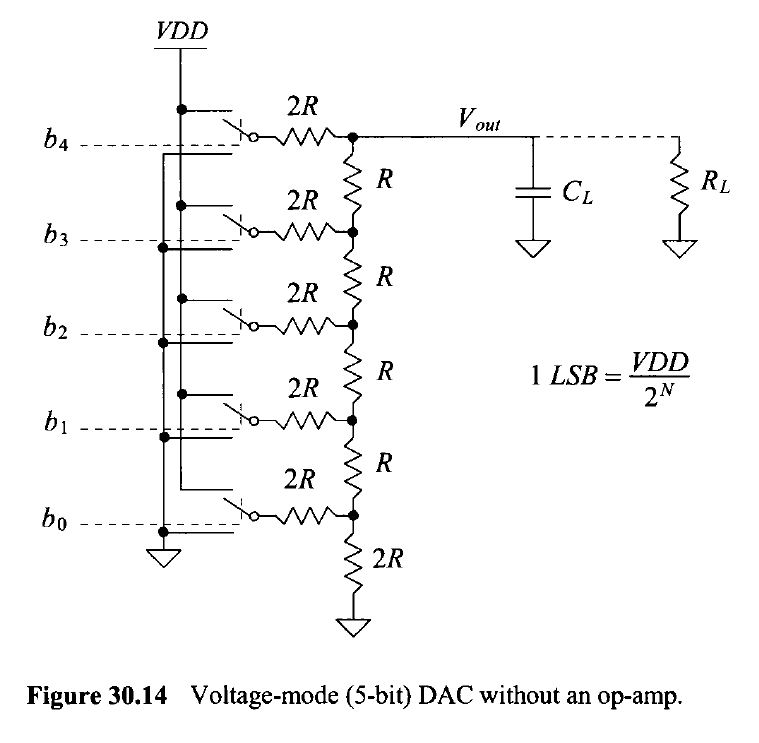Simulation Schematic of Ideal ADC and DAC with 2MHz Sinwave Input.
Below is an inside look of the ideal DAC with all of its switches (seen in every DAC_Bit block).


Single Bit of Ideal DAC (Switches)
Ideal DAC Schematic
Plotting
the simulation will result in the following waveform where the input is
a clear, analog, continuous-time sinewave and the output is a digital
(discrete in voltage levels), continuous-time signal that follows the
input curve. The update speed (width of steps) is due to the speed of
the clock.

Simulation of the Above, Ideal Design
